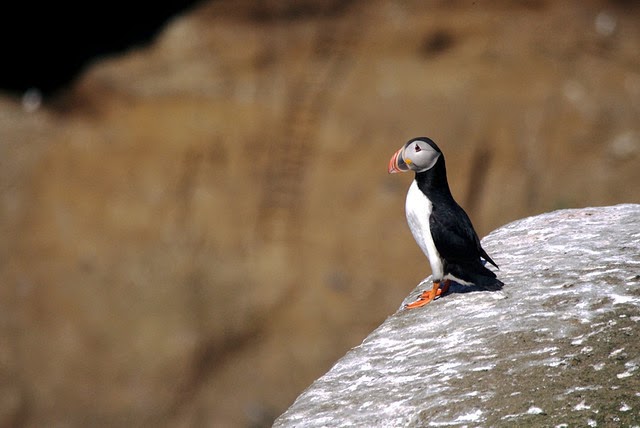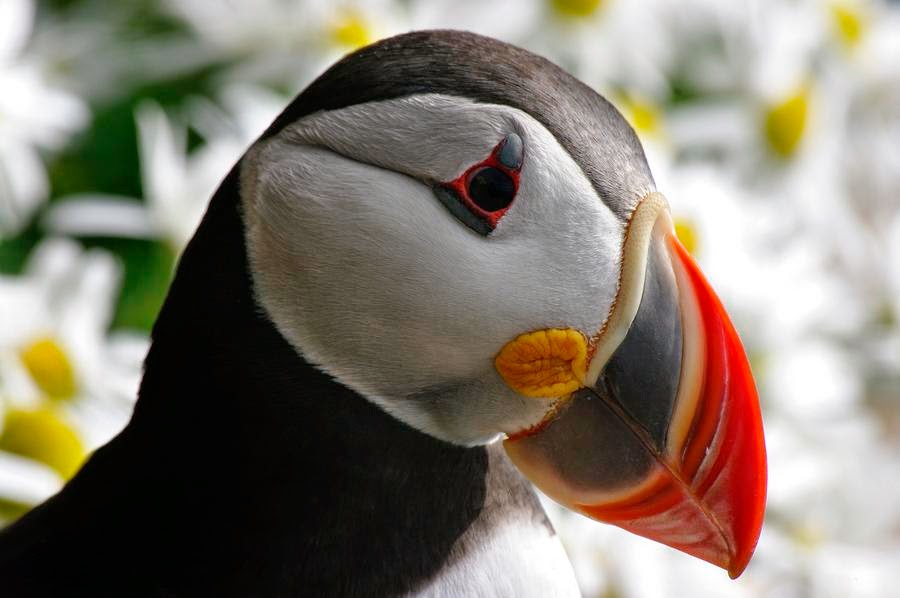Skagafjörður, Iceland
What happens to volcanoes when their fiery lives come to an end? In
the case of Drangey island, it becomes a weird and wonderful island full
of exotic birds, irresistible outlaw stories, and legends of giants.
Long ago in Skagafjörður, northern Iceland, a mighty volcano died,
and over the millennia it crumbled and washed into the sea—all but the
round rock core of its magma passage. 700,000 years later, the corpse of
this powerful force of nature became a symbol of spring and life for
nearby Icelanders. Every year as winter passes, a rich variety of birds
nest in the rugged nooks and crannies of the island, and every year
locals head to the island to collect eggs, go fowling, and do some
serious fishing in between. The haul of fowl is most commonly diving
birds, but the island is also a nesting site for falcons, puffin, and
ravens.
The island attracts riffraff as well. Famous outlaw Grettir
Ásmundarson (commonly known as Grettir the Strong) lived and died on
Drangey Island, and his story is a much loved Icelandic tale. The bad
tempered, redheaded brute was the son of a viking, and his life story is
told from beginning to end in the Grettis Saga. While Grettir was for
the most part portrayed as a gruff but lovable rogue, he was said to be
responsible for a hall fire that killed several men and forced him into
outlawry. The outlaw hid with his brother and slave on the isolated
island for 20 years, giving him a longevity that was virtually unheard
of. Eventually his enemies caught up with him, and he was assassinated
on one of Drangey's rocky cliffs. The Grettis Saga was the first but
certainly not the last literary reference to the volcano island.
While we know the origins of the geology, there is also a fascinating
legend about the Island of Drangey, involving night trolls that become
stone statues when the day breaks. The giant trolls had a treasured cow
that they wished to breed, and so when the cow was finally old enough
and went into heat, the night trolls began the journey across the fjord
to a waiting bull. The husband and wife troll team found themselves up
against a very unwilling, stubborn animal, and as the long trip cross
the water proceeded, the cow's slow gait exposed all three to the sun's
morning rays, and they petrified where they stood, now making up the
pillars of rock at each end of the island. The pillars, named Kerlingin
(the old woman) and Karlinn (the old man) after the two doomed giants,
stood until the 18th century, when Karlinn collapsed into the waters.
Kerlingin still remains.
While snaring is now illegal, locals still head out to the unusual
island every spring and net a glorious feast of eggs, birds, and fish.
Often referred to as a "fortress," the dead volcano island is a stellar
example of the stark beauty consistently offered up by the Icelandic
landscape.
 |
| Grettir the Strong illustration from a 17th-century Icelandic manuscript |
 |
| An adorable puffin nesting on the island |







